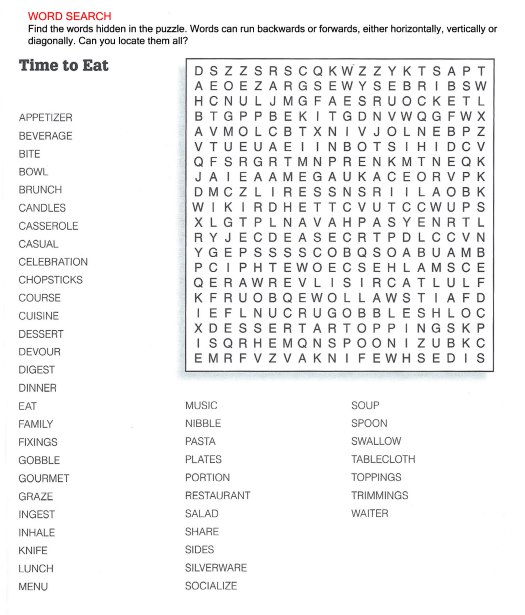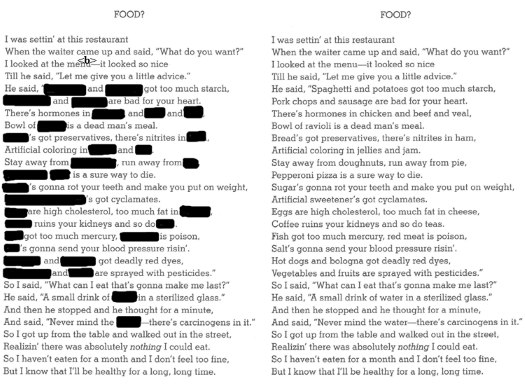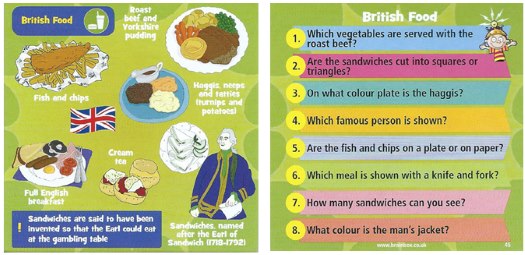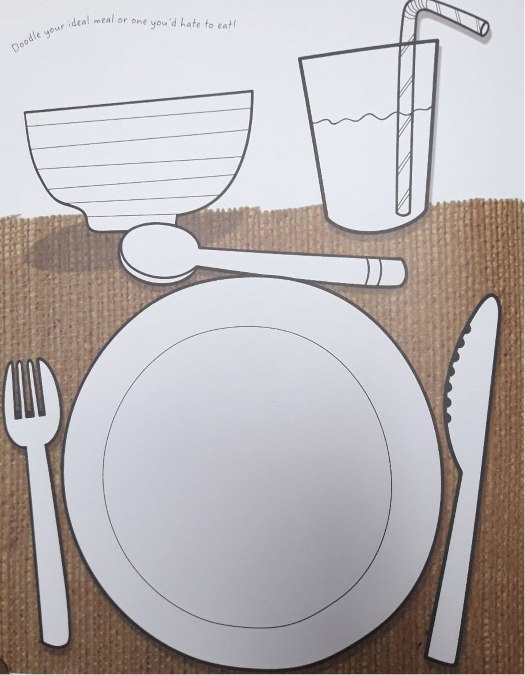Creativity in My Classroom
Martina Kobal, Slovenia
Martina Kobal is a teacher of English at Gimnazija Nova Gorica, which is a co-educational secondary school situated in the west of Slovenia near the Italian border. She enjoys working with teenagers and likes to think of herself as a committed teacher who teaches creatively. She is currently involved in the European Parliament Ambassador School Programme. E-mail: martina.kobal@gimng.si
Menu
Creativity
Teamwork makes the dream work
Lesson plan
Warm-up
Procedure
Extras
Follow-up
Acknowledgement
Conclusion
References
The way I see the role of creativity in my classroom, could be compared to Billy Eliot's response when asked what it feels like when he is dancing, and Billy says, "Electricity".
I believe creative activities used in English language classes spark interest in students, stimulate their imagination, keep the students engaged and create a sense of enjoyment for them. When teaching my secondary school students, I try to create a warm, friendly supportive and creative atmosphere because I am firmly convinced that learning as well as teaching a foreign language should be fun.
If you want creative workers students, give them enough time to play.
(John Cleese)
When I prepare my lessons I like to think of some "extra ingredients" to make the lessons more varied and interesting. I like to include and use quick warm-up activities to start with, such as mind-bending lateral thinking puzzles, 'BrainBox' brain challenges, short miming or dictation activities, 'Sort it Out!' game, 'Rub-outs', 'Name 5' or 'Look, No Spaces!' activities, quizzes, questionnaires, jokes or short poems with blanks.
The major reason why I integrate creative activities into the lesson is to influence, inspire and motivate students to learn English. For example, I use different games (e.g. playing bingo for vocabulary revision), songs, role plays, crosswords, word search puzzles, dictating words and matching them with pictures, magnetic poetry, short videos, jokes and even some crazy, exciting ideas from The Pointless Book by Alfie Deyes.
Moreover, I like to use different short activities to provide relief after discussing a more demanding topic or a new grammar point. Sometimes I round off the lesson with a game or a fun activity, like 'Kahoot!' (https://kahoot.com/), which my students absolutely adore, and it gives me great pleasure to see them leave the classroom with a smile.
I like the idea of students working hard, enthused by the tasks, thinking and learning collaboratively. Therefore I give the students opportunity to work in pairs or small groups or form teams for role plays, races, games, such as board games or card games, and discussions. Of course the students can also complete activities individually and as a class. I am hopeful that mixing up the structure of my activities keeps classes interesting.
What we learn with pleasure we never forget.
(Alfred Mercier)
I am keen on using authentic texts in my classes, from pictures and images taken from popular magazines and websites to podcasts, videos, newspaper articles and book excerpts, depending on the students' level of English. When choosing the most suitable materials to use in class, I keep in mind that learning activities should be meaningful, relevant and that the students should be given the opportunity to take control of their own learning. Therefore, I use activities in which "the students are 'centre stage' and the teacher is in the wings" (Rinvolucri 8) and let the students do the work and benefit the most in the process. I love the idea how using IT in the classroom has revolutionised language teaching and learning and offers teachers unlimited possibilities to create materials in ways that would have been impossible some years ago. Nearly every student now carries a mobile phone in their pocket and I am fond of trying out and finding new ways to use this technology in the classroom. By creating activities, such as 'QR Challenge' (www.classtools.net/QR/) or playing 'Kahoot!', I try to keep my students engaged and I encourage them to use their mobile phones in classrooms for learning English.
To introduce the topic pair the students and ask them to tell each other what they had for their lunch yesterday. However, the students cannot use any words, but mime it. Student A uses mime and gesture to describe their lunch (they cannot speak or spell the word in the air). Student B watches and reports. For example: "You had … a bowl of soup? No? Minestrone?", etc. Get the students to repeat the same activity the other way round.
- Divide the class into groups of four.
- Distribute four different newspaper articles on the same topic. Ask the students to look at the articles quickly and decide which one they want to read in detail. My students were given the topic of a Balanced Diet and they could choose among the following titles:

The articles are taken from Mary Glasgow magazines Current and Club
(http://maryglasgowplus.com/).
- Ask everyone to read the article that interests them.
- The students underline the main points in the text.
- They summarize the main content of the text in one paragraph (maximum four sentences) and tell other students in the group about it.
- The students work on their own and choose one of the following tasks:
- Create discussion questions (Students design their own post-reading speaking activity by drafting questions that they would like to discuss with their classmates. No excuses for the conversation not taking off there!)
- Create questions to the writer (Have your students ever wanted to do this after reading something? If their article has the author’s contact details attached, there is no reason not to send the questions off and see if they get a reply!)
- Create questions to people mentioned in the article (Have your students ever wanted to do this after reading something?)
- Expand the topic (Students tell the teacher or their group what they know about the topic and fill them in on anything they think the author missed out.)
- The students share the work they have been doing and discuss the following questions:
- How healthy is your diet?
- How does diet affect our health?
- After reading the article, is there anything you would change about your eating habits?
- Do you agree or disagree with the following statement: 'One should eat to live and not live to eat'?
- The articles contain challenging vocabulary on scientific terms. Ask the students to learn five new words or phrases they like.
- Ask them to expand and improve their vocabulary by finding the hidden words in the word search.

- Give each group a copy of Shel Silverstein's poem 'Food?' with some words erased in the text. Ask the students to read the poem and fill in the gaps. When your students have filled in the missing words, invite each group to read out their poem. Finally, show them the original poem.

- Play the following memory game. Project the picture on the board. Ask the students to study it for ten seconds and then answer the questions based on visual memory. They can also jot down the answers in their notebooks. Show the picture again to check the answers. The students earn one point for each correct answer.

- Give everyone a copy of the picture below. Ask the students to doodle their ideal meal or one they would hate to eat.

Put the evaluation chart with emoticons on the wall and ask the students for their feedback on how they enjoyed the reading comprehension activity. Ask the students to tick the Emoji just before they leave the classroom.

The reading comprehension activity is an adaptation of "40 Things to Do With a Text", written by Dominic Braham and Anthony Gaughan
(http://teachertrainingunplugged.com/other-writing/40-things-to-do-with-a-text/).
I am not afraid to unlearn and relearn. Besides, I am always willing to learn something new and I am eager to experiment with new techniques in order to grow as a teacher. I consider myself to be a dedicated and passionate teacher and by teaching creatively I strive to bring out the best in my students.

Rinvolucri, M., (2002) Humanising Your Coursebook, Delta Publishing
Silverstein, S., (2011) Every Thing On It, Harper, p. 166
Smith, J., (2010) The Lazy Teacher's Handbook, Crown House Publishing
Timmerman, C., (2016) The Everything Giant Book of Word Searches Volume 11, Adams Media, p. 291
Watt, F., (2010) The Usborne Book of Drawing Doodling and Colouring, Usborne
Brainbox Board Game (2014), The Green Board Game Co
"Can Eating Healthily Make You Ill?" Current May/June 2010: pp. 6-8
"Salt Shocker." Current Jan/Feb 2008: pp. 22-23
"Sugar Rush." Current Jan/Feb 2016: pp. 8-10
"You Are What You Eat." Club March 2005: pp. 12-13

Please check the Creative Methodology for the Classroom course at Pilgrims website.
Please check the Methodology and Language for Secondary course at Pilgrims website.


|